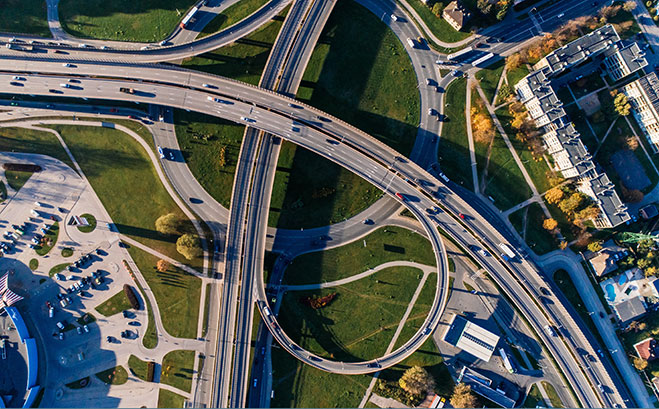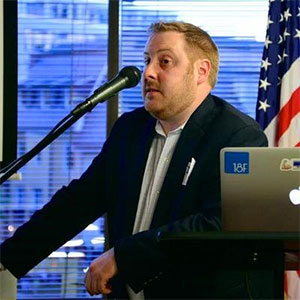USDOT Collaboration: Where Rubber Meets the Road
May 16, 2019 by Melissa Crowe

Photo Credit: Doubbt Official/Flickr
It takes eight months, on average, for the U.S. Department of Transportation to determine the number of highway fatalities in a year.
But eight months isn't fast enough to make a meaningful intervention — and that's coming from U.S. DOT Chief Data Officer Dan Morgan.
From Inventorying to Sharing
 U.S. DOT collaborates with state and local governments to move data faster.
U.S. DOT collaborates with state and local governments to move data faster.
In an address during the Community of Practice National Capital Region event in Washington, D.C., Morgan outlined how his department is informing the future of transportation and the benefits of open data beyond transparency.
"My one thing is if you send it to the feds, you can publish it as open data," he says. "If you can publish it as open data, then I can go get it and you don't have to send it to the feds."
Morgan is the first Chief Data Officer at U.S. DOT. He is responsible for departmental data programs and data compliance.
It all begins with inventorying, establishing governance, and sharing data.
"My one thing is if you send it to the feds, you can publish it as open data. If you can publish it as open data, then I can go get it and you don't have to send it to the feds."
— Dan Morgan, Chief Data Officer, U.S. DOT
U.S. DOT works with Arkansas, the California Highway Patrol, Connecticut, Maryland, Utah, and Virginia. These agencies all submit daily crash files by way of open data portals, built on the Socrata platform, to the federal agency.
"You have to be able to understand the crash event, and how the road was built, and what its characteristics are to really start to make systemic interventions to improve safety," Morgan says. "If we can grab that data from data portals, it could move to us faster... We can actually start to work together."
That work includes flowing federal technical assistance back down to state or local agencies, prioritizing grant funds, or even conducting workshops in state and local governments.
Benefits beyond Transparency
State transportation departments are sharing more than just crash information.
To build capital projects and track progress with federal funds, state and local transportation departments need to understand the big picture. That includes researching wetlands, historical places, wildernesses, and even details about the soil. They might need data from the U.S. Census Bureau, the Department of Motor Vehicles, or even the U.S. Department of Agriculture.
"We rely heavily on all these other kinds of state and local agencies to be able to get a picture of capital plans, or regional plans, or investment plans, and how they might impact the economic development of a region," Morgan says.
The problem with some datasets is they're produced on disparate schedules. They have varying levels of granularity. There's a range of purposes. Because of that, acquiring current, useful, and integral data to do the job right can be difficult, Morgan says.
"We want to collect national statistics, but the intervention happens locally, because that's where the action and the resources really are."
— Dan Morgan, Chief Data Officer, U.S. DOT
State transportation departments and metropolitan planning organizations that already report data — on crashes or other topics — can cake note from their peers. By strategically using an existing open data program, governments can move beyond transparency and into action. They can impact the feedback loop between federal and state and local governments.
"You still have to make big decisions about how you're going to make current investments to position your community to be successful in 2040, today," Morgan says.
Being able to share data across levels of government enables public servants like Morgan to start asking new questions. Then teams can formulate new policy initiatives and decide how to better allocate resources and work together.
"I think what we've been showing is that the agency is wired to answer national questions," Morgan says. "How many people died on our roads as a country? We want to collect national statistics, but the intervention happens locally, because that's where the action and the resources really are."